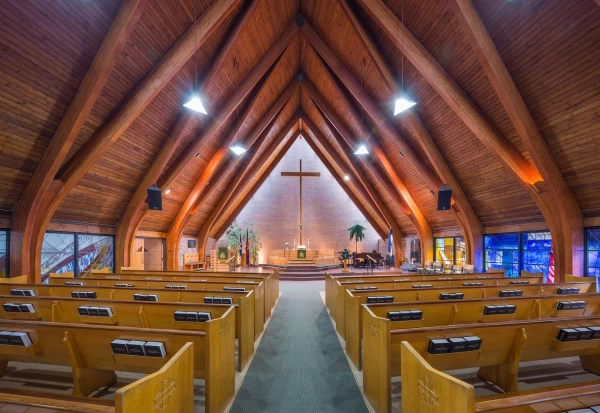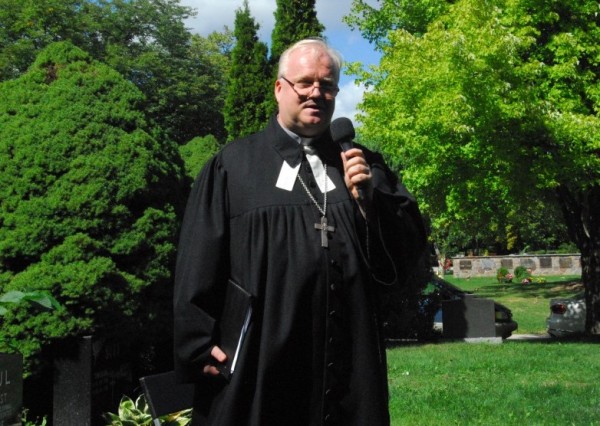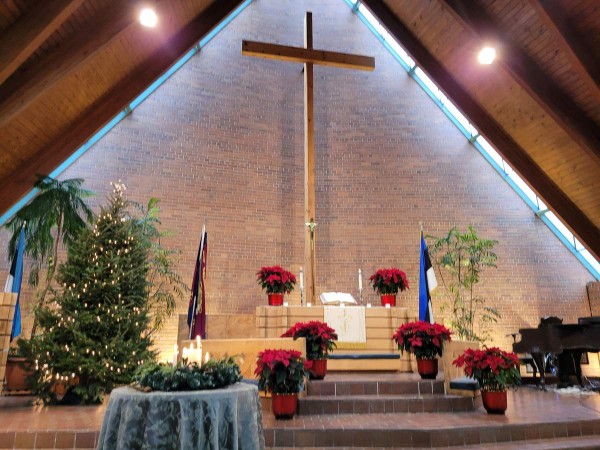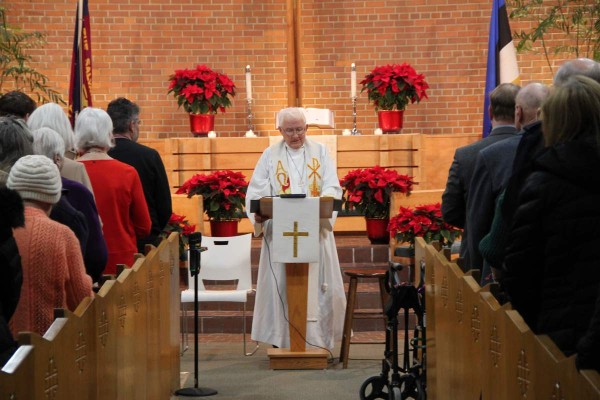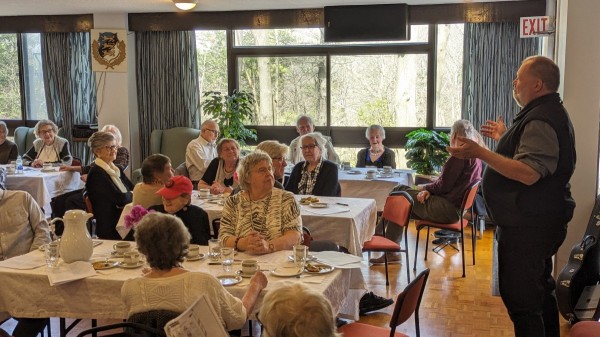Some words of guidance and encouragement to voting members of the synods.
The respected reader of this paper has been often reminded of atrocities that Estonian people, as well as other nations, had endured during the 20th century and with the legacy of which we all have to deal with until this day. Sixty seven years ago soviet troops invaded Estonia once again and this time they remained there for more than fifty years. Before the intrusion in 1944 significant part of Estonian people, including many members of Estonian Evangelical Lutheran Church managed to escape to the West and immediately after arriving to the free ground started to create their own organizations and congregations. Among those refugees a number of clergy, including the leading bishop Kõpp and his auxiliary bishop Laur had left for the West and so the organizing the newly created congregations into church in abroad was relatively smooth.
At the same time, the church in the soviet-invaded Estonia was left to deal with many hardships. Arrests, deportations, murders and ethnic cleansing perpetrated by the soviets followed immediately the occupation and the church suffered alongside with the people. The situation behind the iron curtain was even more complicated, since the bishops had left and church was experiencing the leadership crisis. In those conditions, many heroic steps were taken and by February 1949 a new auxiliary bishop Kiivit was installed in soviet-controlled Estonia. Nevertheless, by the end of the same year Kiivit was promoted as ruling bishop in his own rights with the title “archbishop”, despite the fact that bishop Kõpp was still in office, although in exile. The response of the church in exile to this move was that bishop Kõpp assumed the same rank soon afterwards. In such a way the schism between two geographically and politically separated church bodies came into effect. I am inclined to say that this schism was justified, since it provided the church in homeland with so much needed leadership and did not seem to cause bad blood with the church in the free world. Clandestine contacts through those hard times persisted and despite the canonical schism the communion between the two churches was never broken up, as if there was a tacit mutual recognition in place.
By the 1980’s the rapprochement between two EELCs had already long history. The idea to establish more than just friendly relationship sprang up not long after the regaining of the independence by the native country in 1991. Natural desire to mend, what was broken culminated in proposal to establish the “visible unity” between the two churches. The idea had been floating around for quite a while, but did not take concrete shape, since many questions were unanswered and many controversial issues were plainly avoided. For instance, the role of the soviet state in clergy appointments, and most of all the question arising from 1949 disruption, namely, which of the two churches has to be considered as mother church and which as daughter church. The answer to this seemingly silly question has its serious ramifications (see below).
In 2008 first draft of the agreement stipulating the terms of unification was produced, but it was rejected by the kirikukogu of EELC Abroad. Two years later, after having introduced minor changes, the second draft of the agreement was put before the members of the kirikukogu and voted on in spring 2010. This time, it got approved by a small margin and was subsequently ratified on November 13, 2010 by both ordinaries. Immediately following the ratification the emotionally charged reaction took place in the number of congregations located in the United States and Canada. In several instances, chairpersons of the congregations expressed their extreme unhappiness about the results of the voting and threatened to put before the congregation assembly proposal to leave the EELC altogether. In some cases this has happened already and several congregations have expressed their readiness to end formal ties with the Toronto-based diocese. Needless to say, this has been a very sad development.
What has been causing such a painful anxiety? Indeed, it is the wording of the Agreement – this ill-constructed document –, which managed to cause considerable confusion among the faithful and the clergy alike, resulting in speculations, mistrust and resistance to any steps taken by the church leadership. Striking is the lack of knowledge and the language even among the clergy while talking about canonical matters, especially those pertaining the church structures. Let us now take a closer look at the Agreement between the two churches, ratified on November 13, 2010:
1. The Agreement stops short of stating clearly that two churches, both consisting until now of single diocese, are forming from now on one church, consisting of two dioceses. Thus, it fails to clarify that this is not, by any means a merger, in which one church will be swallowed by another, but rather partnering up of the two dioceses on equal footing, in which both dioceses retain their autonomy and structures in full. Instead, Agreement states, that one church (Toronto-based) continues its existence as a diocese inside the other church (Tallinn-based), at the same time not saying a word in which capacity the Tallinn-based church reconstitutes itself in this new relationship. The constitution of the Tallinn-based church does not provide legal framework to accommodate two-tier structure (national church-diocese), thus Toronto-based church simply cannot be its diocese and paragraph 1 of the Agreement contradicts with Põhikiri of Tallinn-based church and therefore, is null and void. The ill-conceived ecclesial model in the Agreement is doomed to malfunction, because it simply begs for misinterpretation, according to which the restoration of “visible unity” entails full merger of two churches (dioceses) into one, led by one archbishop, who is aided by auxiliary bishops, of which one is based abroad, in our case in Toronto. According to this view, there can be only one archbishop and he alone has full and direct jurisdiction over whole church, while auxiliary bishops only assist him whether in certain matters, or in certain geographical areas.
This faulty way of understanding is further supported by the demands of the Agreement that overemphasize more than pure ceremonial precedence of one of the dioceses – based in Tallinn – by positioning its bishop as ülemkarjane over another diocese, by demoting Toronto-based bishop (namely, by removing the prefix “arch” from his title), and making his diocese accountable to Tallinn (aastaaruanne).
2. By listening closely to concerns of the faithful I have noticed that, both those who support and those who are vehemently opposed to the proposed unity, agree in one issue, namely, that the church cannot have two archbishops. Although it would require a longer excursion into church history to explain the concept of this title, I will try to do it in a very concise way. To keep it short, the ecclesial model “one archdiocese+many simple dioceses” presupposes the existence of so-called ecclesiastical province, which takes its origin in administration of the Ancient Roman Empire, where the bishop of the capital of the province had some prerogatives over other bishops of his province and therefore was ranked as the “archbishop”. But in some cases, certain bishoprics were exempted from ecclesiastical provinces and were raised to the rank of archdiocese. Later, in the medieval times this concept of the “church province” was adopted by kingdoms, but in recent times some of the national lutheran churches (most notably those of Norway and Denmark, and others) have abolished this title for various reasons and equalized all its dioceses. Now, since both existing Estonian dioceses do not comprise any ecclesiastical province (purely for geographical reasons it would be nonsense). Therefore, there is no good reason why Toronto-based bishop would not have retained his former rank. The bottom line is, yes, it would be perfectly fine to have one (united) church consisting of the two archdioceses. And somehow, all this rank-controversy is rather embarrassing, since the episcopal ministry belongs to the essence of the church, but additional titles, given to the office are purely cultural overgrowth, and are the result of human politics and pursuit of power.
3. Undoubtedly, the biggest mistake of the Agreement is that it invests the (visible) unity of our (united) church solely in the office of Tallinn-based archbishop and makes the other diocese and its bishop not only subordinate, but subjugated to Tallinn-based archdiocese. Instead, it would have been wise to invest the unity in some collegial organ, for instance in already existing church congress (kirikukongress), reforming it accordingly, or creating for that purpose a new consultative organ, consisting of equal number of members from both dioceses to explore the ways in which “the visible unity” would manifest itself. In this way, the equality of both dioceses and their respective bishops would have been guaranteed.
4. Finally, there have been numerous speculations concerning the circumstances under which the votes were counted when voting on the proposal in 2010. To this day, no protocol has been released, and it is unknown who were conducting the count and who were present as observers. Some of the congregations were encouraged to vote via e-mail (sic!). Also, at least one member of the Consistory was left uninformed about the place and the actual date of the vote count, preventing him from participating. All this has left the faithful suspicious whether or not any fraud has been committed surrounding this procedure and fueled the mistrust towards the outcome.
My hope is that the approaching of the synods of the two US deaneries, held in Ocean Grove, NJ on May 13-15 will provide an opportunity to put aside empty twaddle and unrelated concerns, and to talk openly and adequately about weaknesses of the Agreement. It would be not too much to consider introducing some necessary changes into it, so that the revised agreement would satisfy all the congregations, provide more clarity and dispel any suspicions. For the greater good, members of the synods should demand from the Consistory the full account of the procedure, in which the votes were counted.
At the same time, it is fitting to remind the voting members on every level, that we are the church which has been very proud of our historic Põhimäärused and now, as never before, it is the occasion to respect this honorable document, which provides norms of democratic governance for our church, by fully accepting the outcome of the voting and humbly set new goals in the new situation. Therefore, I exhort all the chairpersons and members of the church councils, even those who have already taken drastic steps, as well as the members of the deanery synods to abstain from any acts which will lead to creating vagrant congregations or separatist deaneries. It is the place to remind that those steps will contribute further to the ongoing fragmentation of Christ’s Body, and therefore are nothing short of a sin. Instead, I urge you to take time out in order to commit ourselves to cost-benefit analysis in spiritual dimension and to learn from each other by means of rational discourse about those matters, which require intellectual honesty and the suppression of one’s biases. There are other, more civilized ways to show one’s dissent to majority’s decision than just walking away. It is an opportunity to find more inventive means to voice one’s discomfort, at the same time not severing the ties with our bishop and diocese, and our national church.
In conclusion, I am compelled to address you with the words of the apostle Paul, as follows, “Now I appeal to you, brothers and sisters, by the name of our Lord Jesus Christ, that all of you should be in agreement and that there should be no divisions among you, but that you should be united in the same mind and the same purpose.” (1 Cor 1.10)

Sorrowful Separation, Painful Unity (6)
Eesti kirikud | 06 May 2011 | Nelli VahterEesti Elu
Viimased kommentaarid
Kommentaarid on kirjutatud EWR lugejate poolt. Nende sisu ei pruugi ühtida EWR toimetuse seisukohtadega.
http://www.rense.com/general83...
"Germany is too strong. We must destroy her."
- Winston Churchill, Nov. 1936.
"Germany is too strong. We must destroy her."
- Winston Churchill, Nov. 1936.
http://www.prokarelia.net/en/?...
On the 15th of October 1939 an agreement was signed between Stalin and Churchill (the allied forces). The core of it was the plan to destroy Germany both militarily and economically. Churchill’s old plan regarding the Scandinavian operation was also accepted.
http://kultuur.elu.ee/ke492_sa...
On the 15th of October 1939 an agreement was signed between Stalin and Churchill (the allied forces). The core of it was the plan to destroy Germany both militarily and economically. Churchill’s old plan regarding the Scandinavian operation was also accepted.
http://kultuur.elu.ee/ke492_sa...
Do you truly think that none of the members of Vana Andrese kogudus have enough brain matter to think and decide for themselves?
THAT's insulting!
This issue should be over and done with. We have voted and our decision is final.
THAT's insulting!
This issue should be over and done with. We have voted and our decision is final.
Eesti kirikud
TRENDING







